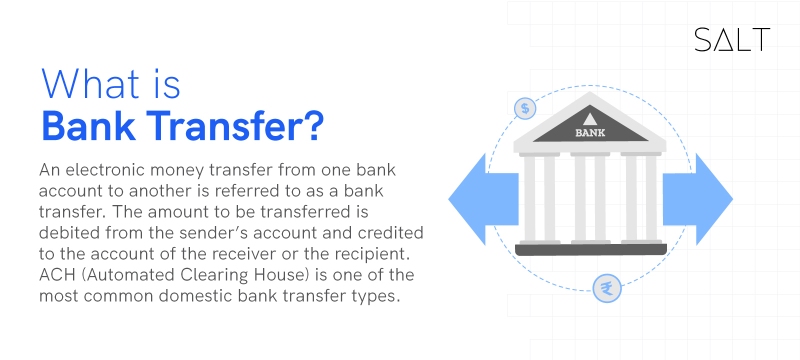Whether you are an SME dealing in export or import, a professional sending remittance from abroad, or an investor sending funds to a startup or an SME in India, wire transfer is one of the most popular ways to receive international payments from abroad. While bank transfers facilitate money transfers domestically, they cannot be used to facilitate cross-border transactions. Let's examine the distinctions between the two, so you can select the transfer method that best suits your needs.

Contents
What is a Wire Transfer?

A wire transfer is a digital method of moving money between bank accounts within the global financial system. Wire transfer facilitates both international money transfers and domestic money transfers via a global interbank system like the SWIFT Network. SMEs operating globally receive international payments via wire transfers and vice versa.
The majority of banks in the world are participants in the SWIFT network system, which stands for the Society for Worldwide Interbank Financial Telecommunication. Every bank participating in SWIFT has a unique identification code to facilitate transactions. The SWIFT code of the recipient bank is crucial if you want to send or receive an international wire transfer.
Banks act as an intermediary between the sender and the receiver of the wire transfer. The sender requests a wire transfer and pays the fees. The bank sends a message containing all the necessary information about the transfer, the sender, and the receiver, to the receiver’s bank via the SWIFT system.
The processing time for wire transfers made using the SWIFT system might vary considering where the sender and receiver are located. Whether it's a bank or a third-party service, there is usually always a wire transfer fee charged by the service provider.
What is a Bank Transfer?

An electronic money transfer from one bank account to another is referred to as a bank transfer. The amount to be transferred is debited from the sender’s account and credited to the account of the receiver or the recipient. ACH (Automated Clearing House) is one of the most common domestic bank transfer types.
In the past, bank-to-bank transactions were inexpensive but took longer than wire transfers. However, technological and operational upgradation in the domestic banking systems have made it simple and quick for people within the same nation to transfer money to one another. These banks have either integrated underlying systems that banks can utilise to promote speedier transfers or have permitted third-party organisations to assist in the transfers.
Difference Between Wire Transfer and Bank Transfer
Both solutions give a slightly different experience and have their own advantages and disadvantages. Following are the distinctions between wire transfers and bank transfers:
The transfer mode in wire transfers involves banks, credit unions and service providers, whereas bank transfers take place directly through banks.
Wire transfers use the SWIFT/ IBAN system, whereas bank transfers use ACH or RTGS, NFT, and IMPS (depends on country) system.
Wire transfers can be done both domestically and internationally, whereas bank transfers are done domestically. While ACH bank transfers are what domestic businesses use frequently, SMEs operating internationally use wire transfers.
Banks levy fees on wire transfers, whereas bank transfers are usually free of cost, but a fee may be applicable if the amount transferred is over the set limit.
Wire transfers are instant, whereas bank transfers can take up to three days.
While bank transfers are secure and reversible, wire transfers are irreversible and comparatively less secure.
Generally, less information is required for a wire transfer than for a bank transfer. For instance, you might only need to include the recipient's email address or mobile number. The recipient is responsible for providing information about their bank account.
Conclusion
SMEs should take special care while handling transactions involving wire transfers since there are numerous formalities and documents involved. While both the transfers do the task of transferring money, their advantages are situation-specific. For instance, if a startup is looking for a cheaper transfer method, bank transfers are the ready answer.
However, if an SME is looking for an instant way to receive money from abroad, a wire transfer is the go-to option.
Remember that choosing the optimum time to send money online requires careful consideration of all the variables. And to carry out these procedures effectively and efficiently, a banking service that supports you and provides for your every need is an essential requirement.
That is where Salt steps in. Business banking has a new address that is cheaper, reliable, and virtual. Salt is not your average banking experience as it deals with all things related to global business banking, so you don't have to. Check it out today!


